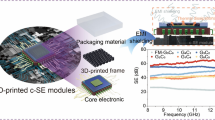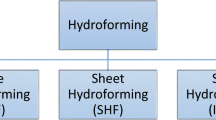Abstract
As the electronic devices tend to be miniature and compact, the pitches both between the adjacent leads on printed circuit board (PCB) and between connectors’ terminals mating with PCB reduces to the level of one tenth millimeter. With lead-free legislation impacting PCB manufacturing, immersion silver finish is adapted as one of the top finish of copper trace on PCB due to its many advantages. At the same time, driven by cost pressure, the silver electroplating is also considered to replace gold plating on electrical contacts of connectors. Therefore, there is a potential risk for silver finish to form electrochemical migration (ECM) under certain potential bias in high humid environment. The effects of the silver plating processes on PCB and connectors, and the thickness, porosity, defects of silver finish, as well as the underplating and substrate materials will increase the complexity of ECM. In this study, possible chemical reactions happened on the silver electrodes were analyzed theoretically based on the analysis of plating processes and detection of porosity and defects. The time to failure caused by ECM was quantitatively calculated by the change of surface insulation resistance between the electrodes with potential bias. The failure mechanisms of ECM both on electroless silver plated PCB and on silver electroplated conductors were compared by element compositions and growth stages of migration dendrites, as well as polarization performance of different material combinations. The influencing factors on ECM, such as the potential bias, the thickness of silver plating, underplating nickel, substrate copper, were also discussed.















Similar content being viewed by others
References
Y. Zhou, Failure mechanism of gold-plated contacts in mobile phones under dust contamination jointing with micromotion condition. IEEE Trans. Compon. Packag. Manuf. Technol. Mar. 5(3), 337–344 (2015). doi:10.1109/TCPMT.2015.2393374
B.I. Noh, J.B. Lee, S.B. Jung, Effect of surface finish material on printed circuit board for electrochemical migration. Microelectron. Reliab. 48(4), 652–656 (2008)
Y. Zhou, C. Yuan, S. Ge, Usability of silver plating and silver bismuth alloy plating on electrical contacts, in 59th IEEE Holm Conference on Electrical Contacts, Newport, Rhode Island, USA, 22–25 Sept 2013, pp. 187–195
S. Ganesan, M. Pecht, Lead-Free Electronics (Wiley, New York, 2006)
P. Vianco, An overview of surface finishes and their role in printed circuit board solderability and solder joint performance. Circuit World 25(1), 6–24 (1999)
E. Lopez, P. Vianco, R. Buttry, S. Lucero, J. Rejent, Effect of storage environments on the solderability of immersion silver board finishes with Pb-based and Pb-free solders. SMTA J. 18(4), 19–28 (2005)
P. Vianco, E. Lopez, R. Buttry, A. Kilgo, S. Lucero, Effects of accelerated storage environments on the solderability of immersion silver-coated printed circuit boards, in Pan Pacific Symposium, Hawaii, 17 Jan, 2006
G.T. Kohman, H.W. Hermance, G.H. Downes, Silver migration in electrical insulation. Bell Syst. Tech. J. 34(6), 1115–1147 (1955)
S. Yang, J. Wu, A. Christou, Initial stage of silver electrochemical migration degradation. Microelectron. Reliab. 46(9), 1915–1921 (2006). doi:10.1016/j.microrel.2006.07.080
S. Yang, A. Christou, Failure model for silver electrochemical migration. IEEE Trans. Device Mater. Reliab. 7(1), 188–196 (2007). doi:10.1109/TDMR.2006.891531
X. Zhong, X. Guo, Y. Qiu et al., In situ study the electrochemical migration of tin under unipolar square wave electric field. J. Electrochem. Soc. 160(11), D495–D500 (2013)
D.S. Peck, Comprehensive model for humidity testing correlation, in IEEE IRPS Proceedings (1986), pp. 44–50
R. Howard, Electrochemical model for corrosion of conductors on ceramic substrates. IEEE Trans. Compon. Hybrids Manuf. Technol. 4(4), 520–525 (1981)
K.S. Kim, J.O. Bang, S.B. Jung, Electrochemical migration behavior of silver nanopaste screen-printed for flexible and printable electronics. Curr. Appl. Phys. 13, S190–S194 (2013)
K.S. Kim, J.H. Ahn, B.I. Noh, S.B. Jung, Electrochemical migration characteristics of screen-printed silver patterns on FR-4 substrate. J Nanosci. Nanotechnol. 12(4), 3219–3223 (2012)
M. Moshrefi-Torbati, J. Swingler, Reliability of printed circuit boards containing lead-free solder in aggressive environments. J. Mater. Sci. Mater. Electron. 22(4), 400–411 (2011)
X. He, M.H. Azarian, M.G. Pecht, Evaluation of electrochemical migration on printed circuit boards with lead-free and tin-lead solder. J. Electron. Mater. 40(9), 1921–1936 (2011)
B.I. Noh, J.W. Yoon, W.S. Hong, S.B. Jung, Evaluation of electrochemical migration on flexible printed circuit boards with different surface finishes. J. Electron. Mater. 38(6), 902–907 (2009). doi:10.1007/s11664-009-0737-z
C.H. Siah N. Aziz, Z. Samad, N. Noordin, M.N. Idris, M.A. Miskam,Fundamentals studies of electro-silver plating process, in Proceedings of the 18th Symposium of Malaysian Chemical Engineers (2005), pp. 1-424-429
W. Wang, A. Choubey, M.H. Azarian, M. Pecht, An assessment of immersion silver surface finish for lead-free electronics. J. Electr. Mater. 38(6), 815–827 (2009). doi:10.1007/s11664-009-0761-z
IPC4553, Feb. 2005, Specification for Immersion Silver Plating for Printed Circuits Boards
Y. Zhou, M.Pecht, Investigation on mechanism of creep corrosion of immersion silver finished printed circuit board by clay tests, in IEEE Holm Conference on Electrical Contacts (2009)
Y. Zhou, P. Yang, C. Yuan, Y. Huo, Electrochemical migration failure of the copper trace on printed circuit board driven by immersion silver finish. Chem. Eng. Trans. 33, 559–564 (2013)
Author information
Authors and Affiliations
Corresponding author
Rights and permissions
About this article
Cite this article
Zhou, Y., Huo, Y. The comparison of electrochemical migration mechanism between electroless silver plating and silver electroplating. J Mater Sci: Mater Electron 27, 931–941 (2016). https://doi.org/10.1007/s10854-015-3836-z
Received:
Accepted:
Published:
Issue Date:
DOI: https://doi.org/10.1007/s10854-015-3836-z




